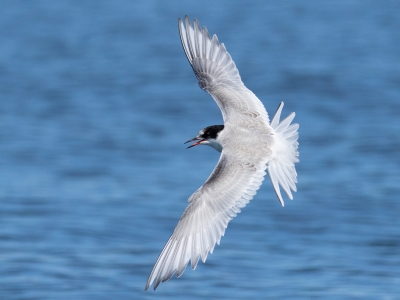
Here’s a closer look at some of the birds that perform great feats of endurance by flying non-stop over land and sea in search of food and warmth.
The Arctic tern
The bird that probably sees more daylight than any other creature in the world is the slender, graceful relative of the seagull, the Arctic term. This 33- to 35-cm-long bird makes the most spectacular migration, travelling over 35,000 km every year. It breeds in the Arctic summer and then flies south, reaching in time for the Antarctic summer!
The terns breed on the Arctic coasts of Alaska, Greenland, Canada, Europe, and Siberia, some nesting within 700 km of the North Pole. They raise their young on the abundance of insects and fish during the short-lived Arctic summer when the sun almost never sets. As winter closes in, they begin flying south. After a journey halfway around the globe, they gorge on the small fish and plankton of the Antarctic ocean throughout the southern summer- once more in almost perpetual daylight!
Shining bronze cuckoo
The Arctic term is not the only avid seeker of the sun. Though it may be the long-distance migration champion, there are other birds that perform greater feats of endurance by flying non-stop over land and sea in search of food and warmth.
The fledglings of the shining bronze cuckoo are abandoned by their parents. With no adult bird to guide them; they fly out each March from their breeding grounds in New Zealand.
They accurately follow the path of their parents to Australia, and from there, turn northwards to Papua New Guinea and the Bismarck Archipelago. Out of the total distance of 6,400 km, 2,000 km is over open sea! One mistake can be fatal, for the birds cannot swim.
Ruby-throated hummingbird
The ruby-throated hummingbird flies 800 km non-stop across the Gulf of Mexico to South America every autumn. Scientists are baffled, because the bird weighs just 3.5 gm, not enough to store so much energy.
What guides birds across such distances so accurately? Scientists discovered in 1977 that deposits of magnetic iron oxide in the skulls of migratory birds may act as a built-in compass. Some believe that the instinct to migrate maybe encoded in the genes, compelling the birds to behave as their ancestors did, even without apparent reason.
Picture Credit : Google




